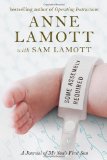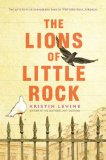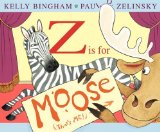Review of Froi of the Exiles, by Melina Marchetta
by Melina Marchetta
Candlewick Press, 2012. 593 pages. First published in Australia in 2011.
Starred Review
Wow. This is an epic, detailed, and complicated world, and Melina Marchetta takes you on a journey through it.
Finnikin of the Rock does stand alone nicely. It didn’t necessarily need a sequel. But you really should read it before reading Froi of the Exiles, and there had better be another book coming, because the story is decidedly not finished in this book.
We met Froi as a scruffy thief in Finnikin of the Rock. In the three years since then, he’s been trained by the elite of Lumatere in many things, including the special skills of an assassin. Now they’re sending him into neighboring Charyn to get revenge on the invasion of Lumatere by killing the king of Charyn. He’s supposed to kill the king and get out. But things do not turn out to be so easy. And it’s not because of the difficulty of the task, but because of the people Froi meets along the way.
This book is richly detailed and finely textured. I’ve noticed that Melina Marchetta rarely introduces you to characters as someone likable. I’d almost go so far as to say that the more unflattering the description, the more important that character is going to be. The amazing part is that she pulls it off. You end up truly caring for these people, despite their apparent flaws. Here’s where Froi meets Quintana:
Beside their own balconette was another that belonged to the room next door. After a moment, the girl with the mass of awful hair stepped out onto it. She peered at Froi, almost within touching distance. Up close she was even stranger looking, and it was with an unabashed manner that she studied him now, and with great curiosity, her brow furrowed. A cleft on her chin was so pronounced, it was as if someone had spent their life pointing out her strangeness. Her hair was a filthy mess almost reaching her waist. It was strawlike in texture, and Froi imagined that if it were washed, it might be described as a darker shade of fair. But for now, it looked dirty, its color almost indescribable.
She squinted at his appraisal. Froi squinted back.
Gargarin appeared beside him and the girl disappeared.
“I’m presuming that was the princess,” Froi said. “She’s plain enough. What is it with all the twitching? Is she possessed by demons?”
It turns out that all of Charyn is cursed with the inability to bear or father Charyn, but Quintana is the key to breaking the curse. This is not a comfortable role.
Meanwhile, back in Lumatere, they are dealing with a band of Charynite refugees who are staying in a valley next to Lumatere. And the new rulers are still trying to rebuild the country. When Froi doesn’t come back, they have to make some choices. Meanwhile, Froi finds out surprising things about himself and his quest gets far more complicated.
Another hallmark of this series is that a lot of people lie. Even good people. Slowly, along with Froi, we get to figure out what is true and what is false and who Froi really is and whether Quintana can truly break the curse and what will they do next?
I love what Melina Marchetta says about the book on the back flap: “It explores nature versus nurture and blood bonds versus friendships, but ultimately it’s a love story between a whole lot of people who should have given up on each other long ago — yet still find it in themselves to hope again.”
The worst part of this book? It ends without finishing the story. I will very eagerly be waiting for the next installment.
Find this review on Sonderbooks at: www.sonderbooks.com/Teens/froi_of_the_exiles.html
Disclosure: I am an Amazon Affiliate, and will earn a small percentage if you order a book on Amazon after clicking through from my site.
Source: This review is based on a library book from the Fairfax County Public Library.
Disclaimer: I am a professional librarian, but I write the posts for my website and blogs entirely on my own time. The views expressed are solely my own, and in no way represent the official views of my employer or of any committee or group of which I am part.
Please use the comments if you’ve read the book and want to discuss spoilers!









